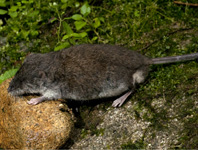Abstract
Liolaemus is an extremely species rich genus of iguanid lizards from southern South America. Most of the diversity though is found in the Andes Cordillera, between Argentina and Chile. Here we describe Liolaemus ubaghsi sp. nov., from El Teniente Mine, in the Andean mountains of the O’Higgins Region in Chile. This species presents scalation and pattern traits that belong to the leopardinus clade, a group of viviparous, high altitude lizards that inhabit the mountain ranges surrounding Santiago City. The species of this clade in turn belong to the Andean and Patagonian elongatus-kriegi complex. Liolaemus ubaghsi sp. nov. has been previously recognized as L. leopardinus and L. elongatus, nevertheless we present diagnostic traits that allow us to describe it as a new species. It mainly differs from the rest of the leopardinus clade (L. leopardinus, L. ramonensis, L. valdesianus and L. frassinettii) by having the following unique combination of traits: ochre background coloration, a wide dark occipital stripe, dark flanks, white dots dispersed on the dorsum, absence of leopard-like spots and enlarged infralabial scales.

